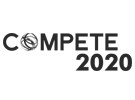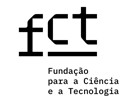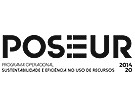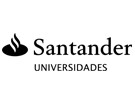



Publication in the Diário da República: Despacho n.º 8956/2023 - 31/08/2023
8 ECTS; 1º Ano, Anual, 28,0 T + 28,0 TP + 4,0 S , Cód. 39325.
Lecturer
- João Manuel Mourão Patrício (1)
(1) Docente Responsável
(2) Docente que lecciona
Prerequisites
Not applicable.
Objectives
Evaluate real management and engineering problems and design strategies for modeling and solving them using advanced software, be able to interpret the information and integrate it into mathematical models for data and risk analysis.
Program
1 Operational Research (OR): basic concepts and their place in planning processes
1.1 How OR fits into decision-making processes
1.2 Objective function, decision variables, constraints and technological coefficients
2. Introduction to IBM/ILOG GAMS software.
3. Modeling and solving linear programming problems.
3.1 General linear problems
3.2 Integer linear problems
3.3 Application to minimum cost and maximum flow problems
4 Fundamentals of Statistical Inference
4.1 Estimation theory
4.2 Decision theory
4.2.1 Probability of significance
4.2.2 Confidence intervals vs. hypothesis tests
5 Multivariate Linear Regression Analysis
5.1 The type I linear regression model
5.2 The least squares method
5.3 Inference on the linear regression model
5.4 Validating the assumptions of the linear regression model
5.5 Variable selection (Forward, Backward and Stepwise)
5.6 Collinearity diagnostics
5.7 Predicting the response
5.8 The type II linear regression model
6 Principal Component Analysis (PCA)
6.1 Introduction. Applications
6.2 Factor analysis and principal components
6.3 The derivation of principal components
6.4 Decomposition of the total variance
6.5 Weights and correlations between variables and principal components.
6.6 Eigenvalue analysis
6.7 Cluster analysis
Evaluation Methodology
Continuous assessment, divided into two components:
- 1st component, corresponding to sections 1 to 3 of the syllabus, through a written report, complemented by an oral presentation;
- 2nd component, corresponding to sections 4 to 6, through a written test.
The overall mark for continuous assessment is the arithmetic mean of the two components. A mark of 9.5 or more in this component exempts you from taking an exam.
Assessment by exam: a written test.
Bibliography
- Ahuja, R. e Magnanti, J. (1983). Network Flows: Theory, Algorithms and Applications. New Jersey: Prentice-Hall
- Magalhães, A. e Ramalhete, M. e Guerreiro, J. (1994). Programação Linear. Lisboa: McGraw-Hill
- Mann, P. (2001). Introductory Statistics. New York: John Wiley & Sons, Inc.
- Marôco, J. (2021). Análise Estatística com o SPSS Statistics. Lisboa: ReportNumber
- Pedrosa, A. e Gama, M. (2004). Introdução Computacional à Probabilidade e Estatística. Portugal: Porto Editora
Teaching Method
Theoretical-practical sessions supported by powerpoint presentations, and practical exercises.
Software used in class
GAMS/CPLEX and IBM SPSS.

















